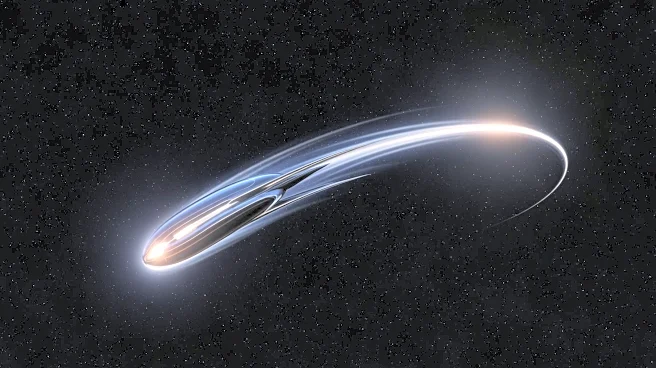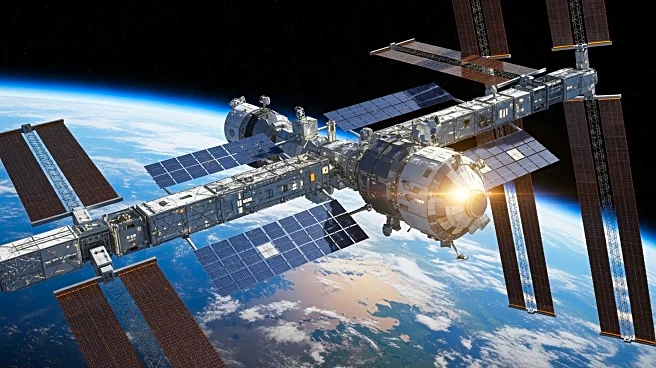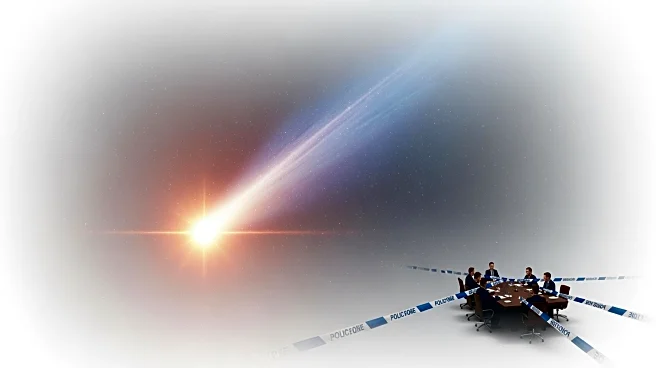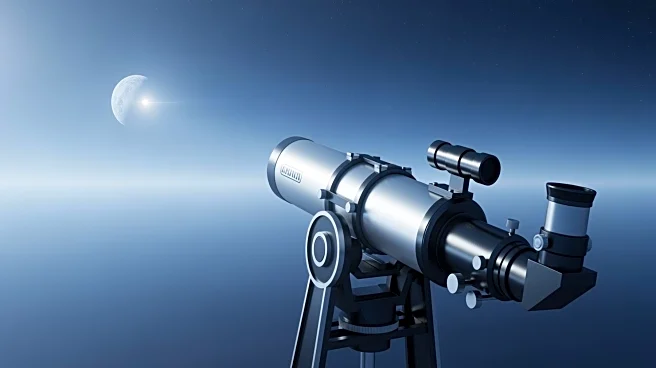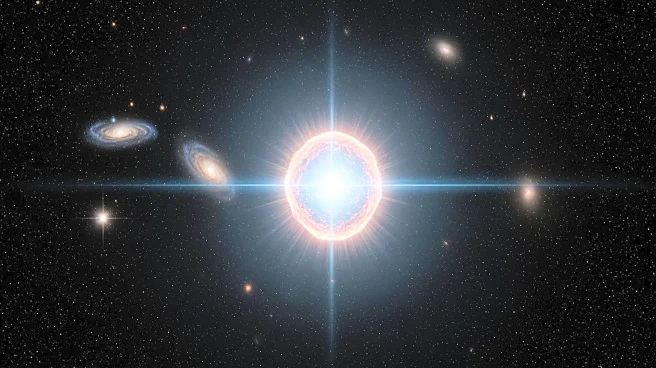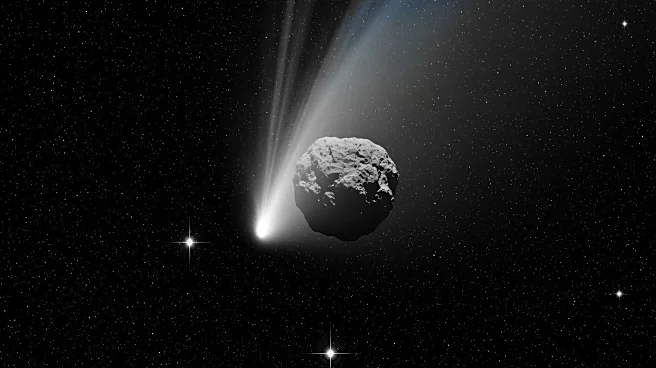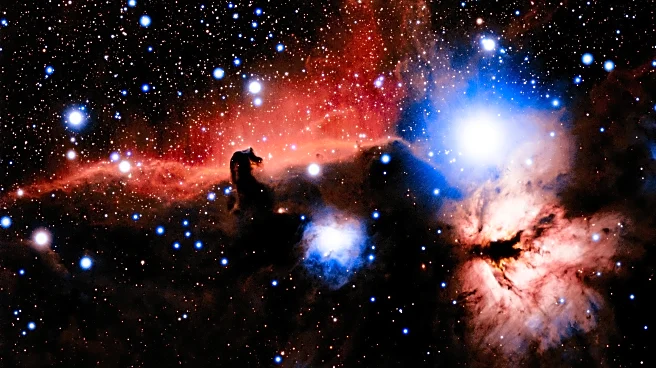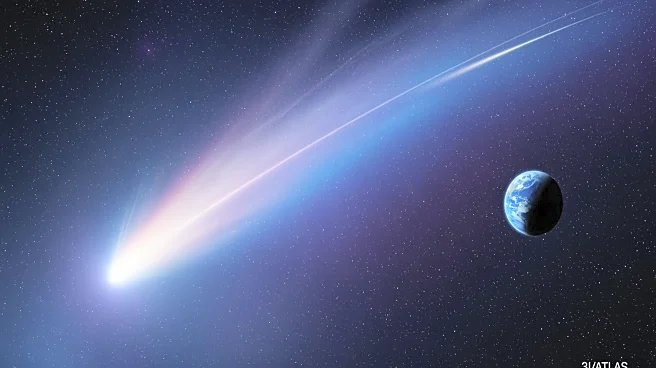What's Happening?
The interstellar object 3I/ATLAS has been observed showing signs of non-gravitational acceleration as it passed near the sun. This phenomenon has captured the attention of the global scientific community. Avi Loeb from the Harvard Institute discussed
these findings with NBC News, highlighting the unusual behavior of the object. The non-gravitational acceleration suggests that forces other than gravity are influencing the object's trajectory, which is a rare occurrence for celestial bodies. This discovery has led to increased interest and debate among astronomers regarding the object's origin and the forces at play.
Why It's Important?
The observation of non-gravitational acceleration in 3I/ATLAS is significant as it challenges existing understanding of interstellar objects and their interactions with solar systems. Such findings could have implications for the study of celestial mechanics and the forces that govern the movement of objects in space. The scientific community stands to gain new insights into the nature of interstellar objects, potentially leading to advancements in space exploration and technology. This discovery may also influence future research priorities and funding in the field of astronomy.
What's Next?
As scientists continue to study 3I/ATLAS, further observations and analyses are expected to provide more clarity on the forces affecting its trajectory. The scientific community may conduct additional research to explore the potential causes of the non-gravitational acceleration. This could involve collaborative efforts among international space agencies and research institutions. The findings may also prompt discussions on the need for new theoretical models to better understand interstellar phenomena.
Beyond the Headlines
The discovery of non-gravitational acceleration in 3I/ATLAS raises questions about the potential for similar phenomena in other interstellar objects. It also highlights the importance of international collaboration in space research, as understanding such occurrences requires a global scientific effort. The event underscores the need for continued investment in space observation technologies and the development of new methodologies to study celestial bodies.
